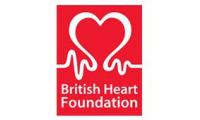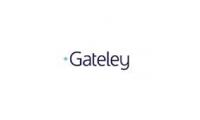This consensus statement was agreed and adopted by the Community Resuscitation Steering Group for England in November 2015. This replaces the previous statement made jointly by the RC (UK) and BHF and is considered applicable in all four nations.
Introduction
When someone suffers sudden cardiac arrest, prompt action by anyone nearby offers their only chance of survival. An immediate 999 call for an ambulance and starting cardiopulmonary resuscitation (CPR) immediately are essential. Most people who survive will have needed a shock from a defibrillator to correct a chaotic heart rhythm.
The earlier that shock is given, the better the person's chance of survival. Studies have shown that a shock given within 3 minutes of cardiac arrest provides the best chance of survival and that even one minute of further delay reduces that chance substantially. In most situations ambulance services would be unable to reach the scene of a cardiac arrest and deliver a shock within 3 minutes. Further studies have shown that immediate delivery of CPR combined with early use of an automated external defibrillator by members of the public gives a person in cardiac arrest the best chance of surviving.
For that reason there are increasing numbers of automated defibrillators available for use by members of the public. They are referred to as 'public-access defibrillators'. They are simple to use and can be used effectively and safely by people who have had no prior training.
Cabinets for public access defibrillators
Public-access defibrillators are usually kept in cabinets in prominent public locations with appropriate signs to help people to find them and know what they are. There has been a long-running debate about whether these cabinets should be openly accessible (unlocked) or whether they should be locked. The main options are between unlocked cabinets and different types of lockable cabinets.
Some locked cabinets need a numerical code to unlock the door, usually needing a further 999 call to the ambulance service to obtain the code. Others can be unlocked remotely from the ambulance control centre when they receive a call asking for the defibrillator to be made available.
Measures other than locks may be used to protect a defibrillator in an unlocked cabinet (see below). Advances in technology may lead to other options in the future.
Advantages and disadvantages of unlocked and locked cabinets
The priority is to get a defibrillator and apply it to the person in cardiac arrest with an absolute minimum of delay. Unlocked cabinets allow immediate access to a defibrillator in a situation where seconds count.
There is concern that a defibrillator in an unlocked cabinet may be stolen or tampered with, making it unavailable or of no use to a person in cardiac arrest. However, despite widespread use of unlocked cabinets, experience to date has shown that instances of theft and vandalism of such defibrillators are relatively uncommon.
Locking a cabinet is no guarantee that a defibrillator will not be stolen or vandalised. Locking a defibrillator in a cabinet implies that it is sufficiently valuable to be worth stealing. Reports from ambulance services and other sources provide no evidence that public-access defibrillators in locked cabinets are less likely to be stolen or vandalised.
Lockable cabinets inevitably introduce delay in obtaining a defibrillator and applying it to a person in cardiac arrest. A person who knows where the nearest public-access defibrillator is and runs straight to the cabinet to fetch it (whilst other people call 999 and start CPR) will have to call 999 themselves before they can get the defibrillator and take it to where it is needed. This wastes valuable time in getting it to the person in cardiac arrest and requires an extra call to an ambulance service that has to respond promptly to many other calls.
Other crime prevention measures may reduce the risk of theft and tampering with a public-access defibrillator. These might include siting the cabinet in a public place that is covered by closed-circuit television surveillance, use of tracking devices in defibrillators, so that their removal from the cabinet is known about immediately and their whereabouts is traceable, or other clearly advertised measures that will discourage criminal interference.
Another factor to consider is cost. A defibrillator and lockable cabinet or a defibrillator with additional technology (such as remote tracking) costs substantially more than a simple cabinet and straightforward defibrillator respectively.
Recommendation
Where conditions allow, defibrillators should be placed in openly accessible (unlocked) cabinets that allow immediate access in an emergency. A decision to place a public-access defibrillator in a locked cabinet should be made only on the basis of careful risk assessment in that specific location.
Liaison and collaboration with the local ambulance service is crucial to the success of any public-access defibrillator scheme. It is essential to take their advice on the type of defibrillator and cabinet to install. Some ambulance services have a policy only to work with defibrillators in unlocked cabinets.
In case of uncertainty, we recommend that you take advice from your local crime prevention officer about the risks of theft or vandalism and the security measures that will minimise these without making the defibrillator inaccessible or creating avoidable delay in access to it when it is needed.
Supported by the British Heart Foundation.































































